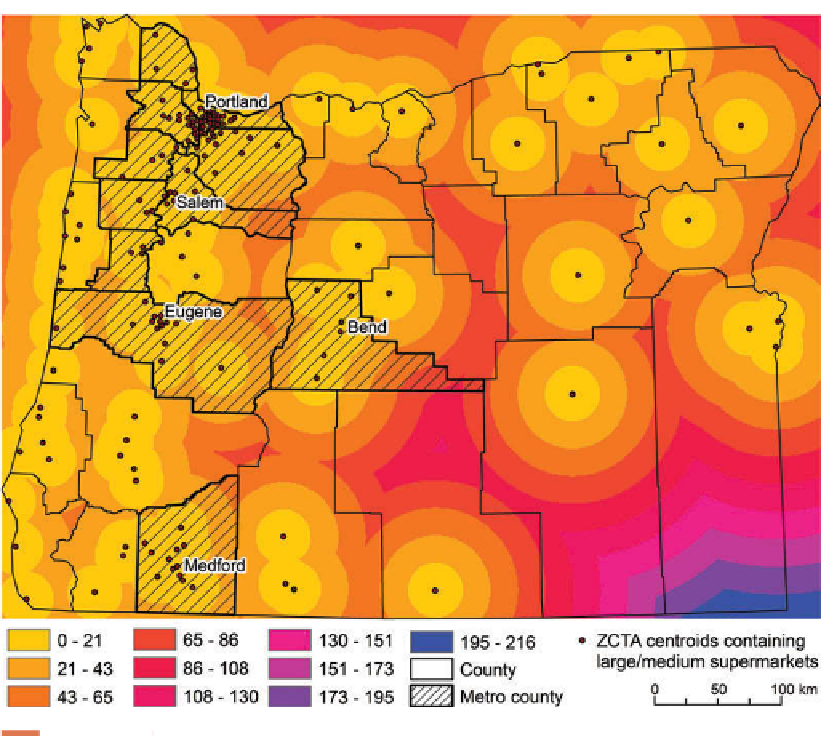Geography Reference
In-Depth Information
Figure 11.24
Food deserts in Oregon, 2010.
Mean distance (km) from population-weighted ZIP Code
Tabulation Area (ZCTA) centroids containing large or medium supermarkets in Oregon.
Map
courtesy of:
Aki Michimi, 2011.
Geographers Akihiko Michimi and Michael Wimberly
found that rural food deserts lack not only access to larger
grocery stores but also public transportation to reach larger
grocery stores. In their study of food deserts and access to
fruits and vegetables, the geographers found that since the
1980s in rural areas of the United States a “restructuring of
food retail industries has occurred such that local grocery
stores that once served small rural communities have been
closed” and replaced with larger national chains in regional
trade centers. Michimi and Wimberly also found a differ-
ence between food deserts in metropolitan and nonmetro-
politan areas of the United States. In metropolitan areas,
obesity rates increased and the rate of fruit and vegetable
consumption decreased with increasing distance from gro-
cery stores. They did not fi nd the same correlation in non-
metropolitan areas, however.
Summary
Agricultural production has changed drastically since the First Agricultural Revolution.
Today, agricultural products, even perishable ones, are shipped around the world.
Agriculture has industrialized, and in many places, food production is dominated by
large-scale agribusiness. A major commonality between ancient agriculture and modern
agriculture remains: the need to change. Trial and error were the norms of early plant
and animal domestication. Agriculture makes distinct impressions on the cultural land-
scape, from how land surveys, to land ownership, to land use. In the globalized economy,
what is produced where depends on many factors, from climate and government regula-
tion to technology and worldwide demand for crops.










































